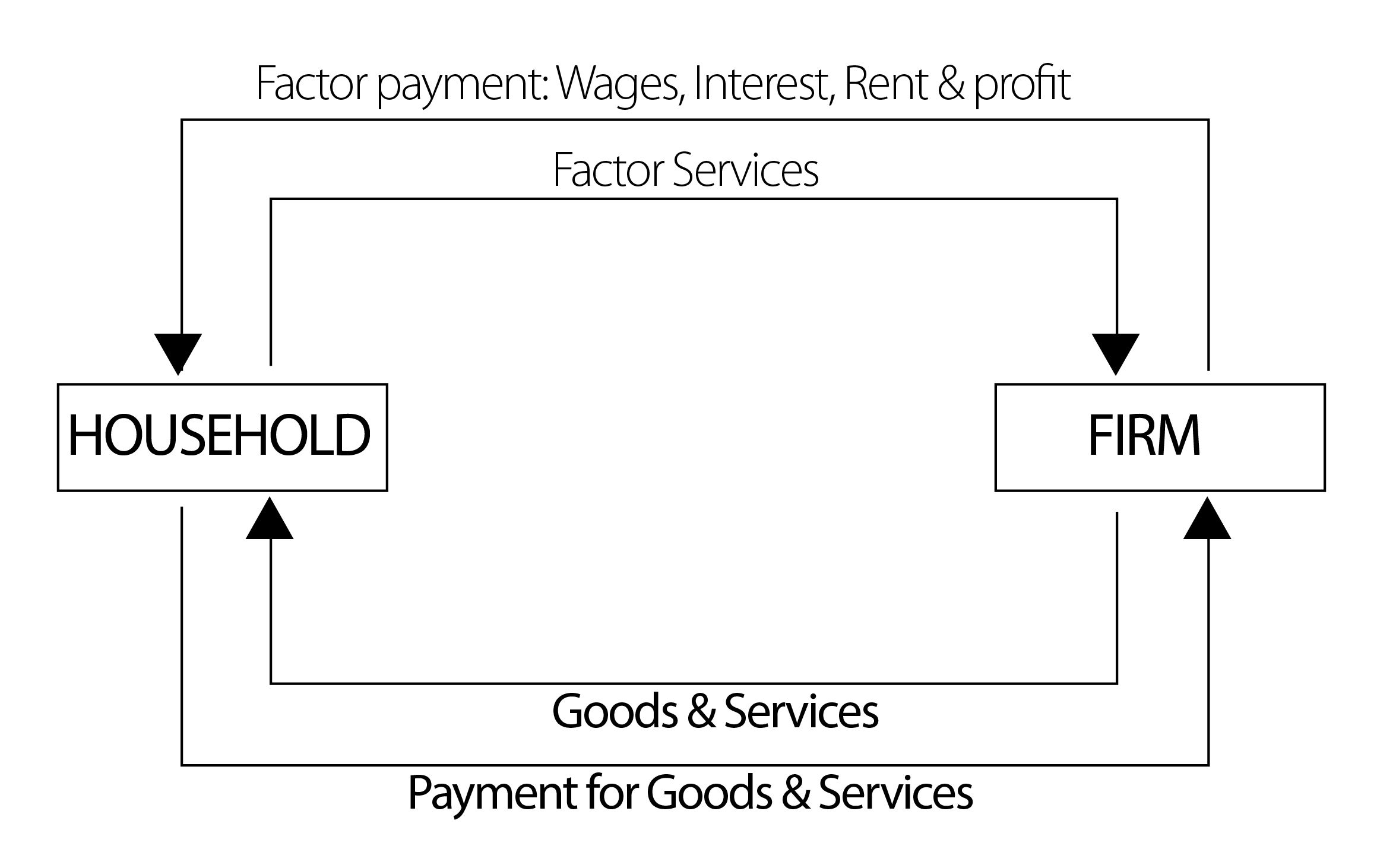
Introduction
Macroeconomics deals with economic problems at the level of an economy as a whole. The circular flow of income refers to the continual circular movement of money and goods or services in an economy. It helps to know the functioning of an economy. Economic transactions generate two kinds of flows:
1. real flow i.e, the flow of goods and services and
2. money flow. Real and money flow goes in the opposite direction in a circular flow/fashion.
The whole economic system can be viewed as circular flows of income and expenditure. Real flows of income refer to the flow of factor services from the household sectors to the producing sectors and corresponding flow of goods and services from producing sectors to the household sectors.
Money flow of income refers to the flow of factor incomes i.e rent, wages, profits, interest, etc from the producing sector to the household sector as monetary rewards for their factor services.
Circular Flow of Income and Expenditure in a Two-sector Model
A two-sector model consists of only household sectors and business sectors in a closed economy. Therefore, two-sector circular flow is based on the following assumptions:
(i) There are only two sectors in the economy, the household sector, and the business sector.
(ii) The business sector (or the firms) hires factors of production owned by the household sector and it is the sole producer of goods and services in the economy.
(iii) The household sector is the sole buyer of goods and services. It spends its entire income on the goods and services produced by the business sector.
(iv) The business sector sells the entire output to households. It does not store.
(v) There are no savings and investment in the economy.
(vi) The household sector receives income by selling or renting the factors of production owned by it.
(vii) The government does, not exist for all such practical purposes (No public expenditures, no taxes, no subsidies, no social insurance contribution, etc.).
(viii) The economy is closed one having no international trade relations.

fig: The Circular Flow in Two-Sector
You may also like: The Circular Flow in Three-Sector

Great work guys….. This is big for starters….